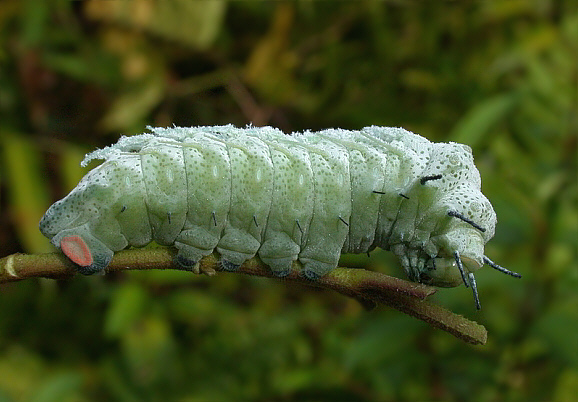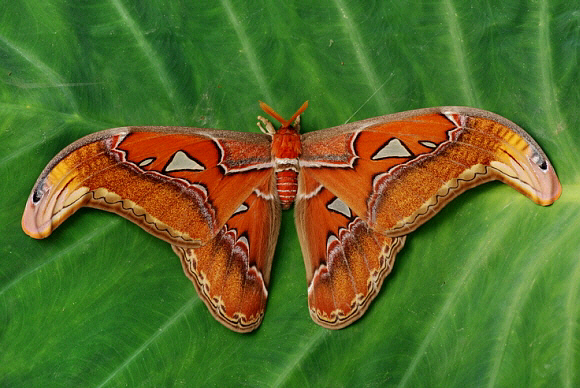
Attacus atlas, Singapore – Gan Cheong Weei
Introduction
Attacus atlas is found as various subspecies from India and Sri Lanka eastward to China and across the islands of southeast Asia to Java. There are 12 Attacus species, including wardi from Australia, aurantiacus from Papua New Guinea, selayarensis from Selayar island in Indonesia, and atlas, which is found as various subspecies from India and Sri Lanka eastward to China and across the islands of southeast Asia to Java. The Himalayan species edwardsii and the Malaysian species staudingeri were formerly included in Attacus but are now placed in the genus Archaeoattacus.
Habitats
This species is found in primary and disturbed tropical rainforest habitats at altitudes between sea level and about 1500m.
Lifecycle
The plump larvae of the Giant Atlas moth are huge, growing to almost 5″ / 120cm. They feed on a variety of plants including Annona (Annonaceae), Citrus (Rutaceae), Nephelium (Sapindaceae), Cinnamomum (Lauraceae), and Guava (Myrtaceae). They often move from one plant species to another in the course of their development.
Adult
The Giant Atlas is generally recognized as being the largest moth in the world, having a wing area of about 400 sq cms (65 sq inches). It can measure up to 30 cms across the wings, but is beaten in terms of sheer wingspan by a South American moth Thysania agrippina, which measures up to 32cms across the wings, although it has a significantly smaller wing area than Attacus atlas. Despite their huge size and bright colors, Atlas moths are remarkably difficult to find in the wild. The disruptive pattern breaks up the moth’s outline into irregular shapes which blend well amongst a mix of living and dead foliage.
If disturbed from rest, Attacus atlas employs an unusual form of defense – it simply drops to the ground and slowly fans the wings. As the wings move, the “snake’s head” lobe at the apex of the forewing oscillates. This is a threat gesture that deters predators who “see” a snake instead of a moth.

Attacus atlas, Singapore – Gan Cheong Weei
